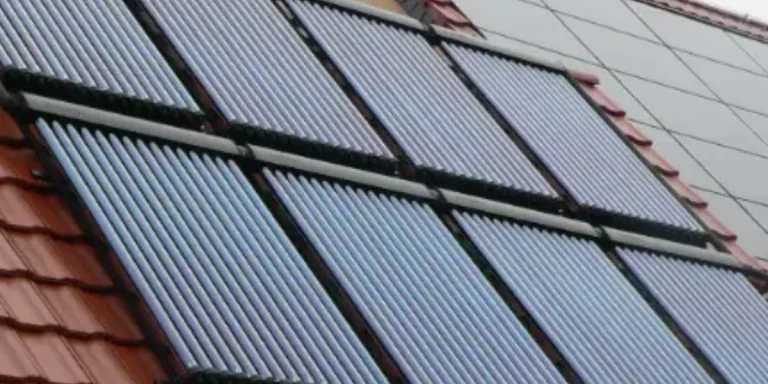Solar collectors, also called solar thermal collectors, are designed to collect heat from sunlight. This technology is typically used for water heating, although sometimes for air heating or cooking, and in some applications for power generation. This article offers guidance in choosing the right collector for your needs, and looks at some of the top choices available on the market today.
Table of Contents
The growth of the solar collector market
An introduction to solar collectors
Flat plate solar collectors
Evacuated tube solar collectors
Other types of solar collectors
Final thoughts
The growth of the solar collector market
The solar thermal collectors market is showing a healthy growth over the period to 2031, largely due to an increasing demand for alternative energy sources, and the increasing price of national grid power provider supply. Hot water supply for many is a necessity, especially in cold climate countries, whereas swimming pool heating is a practical and cost-effective option for the luxury market.
Between 2022 and 2031, the compound annual growth rate (CAGR) is projected at 5.1% from a 2021 value of US$ 21.5 billion to a 2031 value of US$ 35.3 billion.
When that growth is broken down by solar collector type, the same research shows that evacuated tube technology will exceed the growth of flat plate collectors, with other technologies of unglazed water collectors and air collectors having a smaller share and smaller growth.
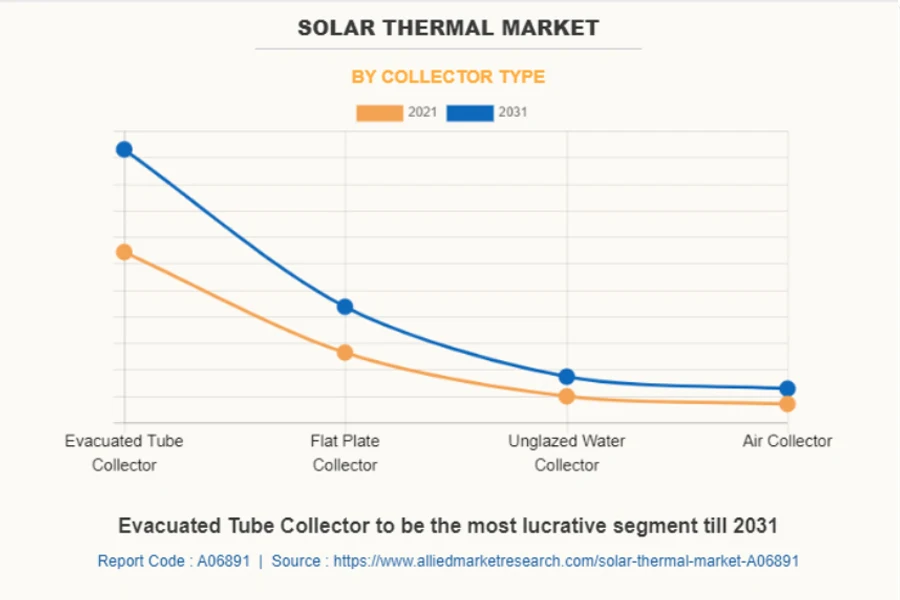
Primary market share is driven by residential use, followed by commercial and industrial use. Asia Pacific is expected to see the greatest demand, especially China and India due to their fast growing populations, high demand for power and government support for renewable energy systems.
An introduction to solar collectors
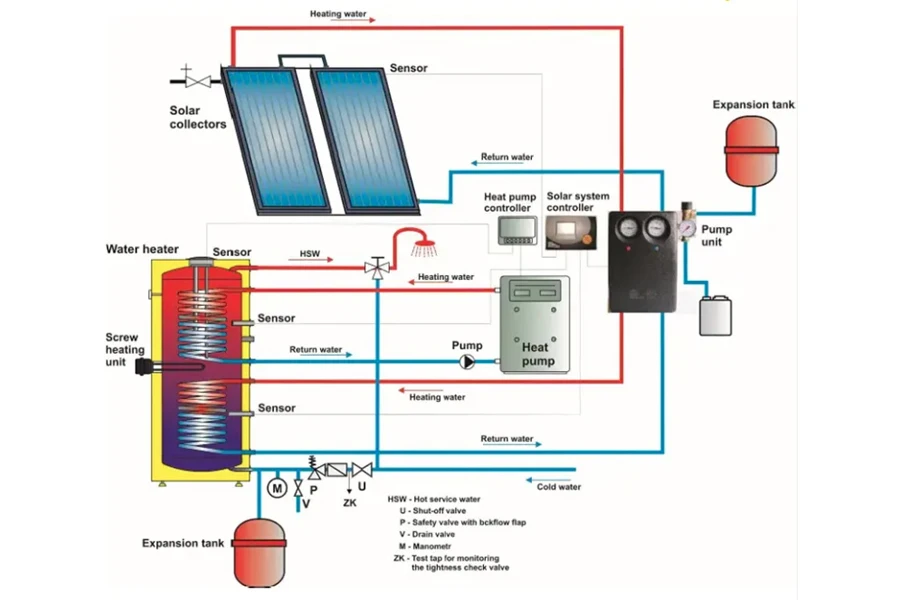
Solar collectors are designed to capture the heat from the sun’s rays and transfer that heat as efficiently as possible to a heating application. They are most frequently used for water heating, to provide a home with hot water, or for heating a swimming pool. Within residential water heating systems, heated water from the solar collector is transferred to, and stored in, the main water heater to supplement the house water heating system. In countries with inconsistent power supply, the home can still produce hot water during daylight hours, and can supplement the water heating when main grid power is available.
There are two main types:
- Flat plate collectors that contain an array of water-filled tubing to either heat the usable water directly, or to collect and transfer heat.
- Evacuated tube collectors that use a heat collector medium, held within a vacuum-filled glass tube to improve thermal conductivity and to reduce heat loss.
Some simple selection considerations are:
- Evacuated tube collectors are regarded as the best systems for colder climates, because of their efficient heat capture. Flat plate collectors are a more common choice for tropical and subtropical climates.
- Evacuated tube solar collectors heat water quickly, up to around 200 degrees fahrenheit, whereas flat plate collectors are slower to heat up, to a maximum or around 140 degrees fahrenheit.
- Flat plate collectors are usually cheaper than evacuated tube collectors, although the additional cost can be offset by greater heat generation efficiency.
The efficiency of different solar collectors is usually measured with mathematical models that use a number of factors, including the surface area, ambient temperature, and various other factors such as reflectiveness. However, the primary factors can be summarized as the amount of heat absorption, given the solar energy available, to give an efficiency percentage. A range of 60%-80% is desirable.
These numbers are not readily available from sellers, but a buyer can ask for the information. Other selection factors will be based on desired application, location/position of the collector, and typical sunlight conditions. The user will need to measure the space available to decide how big a unit, and how many, can be installed.
Please note that solar collectors differ from solar cell panels, or solar photovoltaic panels, which use an array of photovoltaic cells (PV) that excite electrons. These excited electrons are then passed through a circuit to generate direct current that can be used directly to power devices, or to be stored in batteries for later use.
Flat plate solar collectors
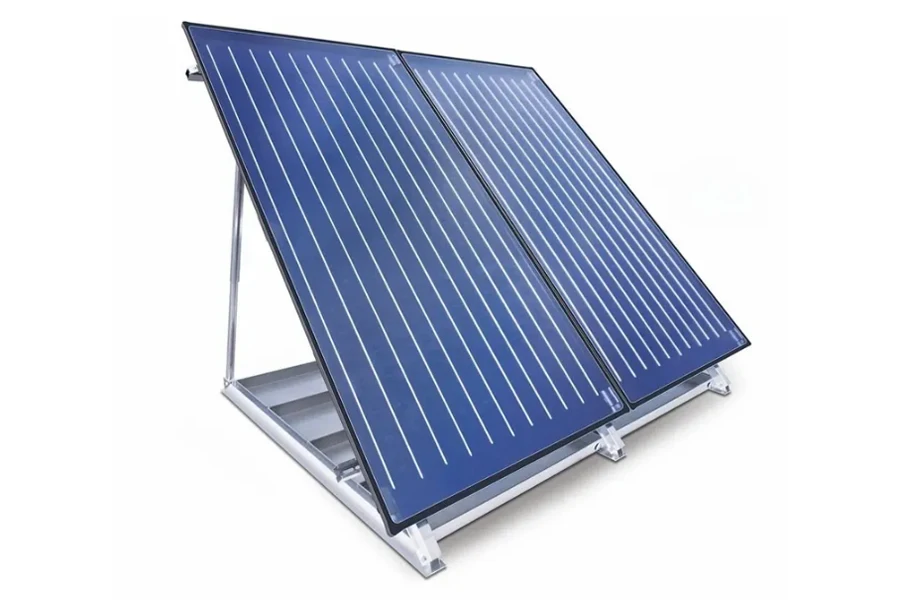
Flat plate solar collectors are a very common choice for solar thermal collectors, as their flat panel can be fitted against slanted roofs without creating an uneven profile.
Flat plate collectors consist of:
- A flat panel with a front absorber plate, dark tinted for best heat absorption.
- A clear protective cover that allows sunlight to filter through to the absorber plate. These are usually non-reflective and may incorporate specialized materials such as tempered soda-lime glass.
- A copper tubing circulation system that allows a fluid to circulate through the panel to remove and absorb heat from the plate. In hot climates, this fluid is usually water, whereas in cold climates this may be an antifreeze mix. If an antifreeze-like fluid is used instead of water, the collected heat is transferred to the hot water tank to heat the water.
- Insulation around the panel to reduce any heat loss.
Evacuated tube solar collectors
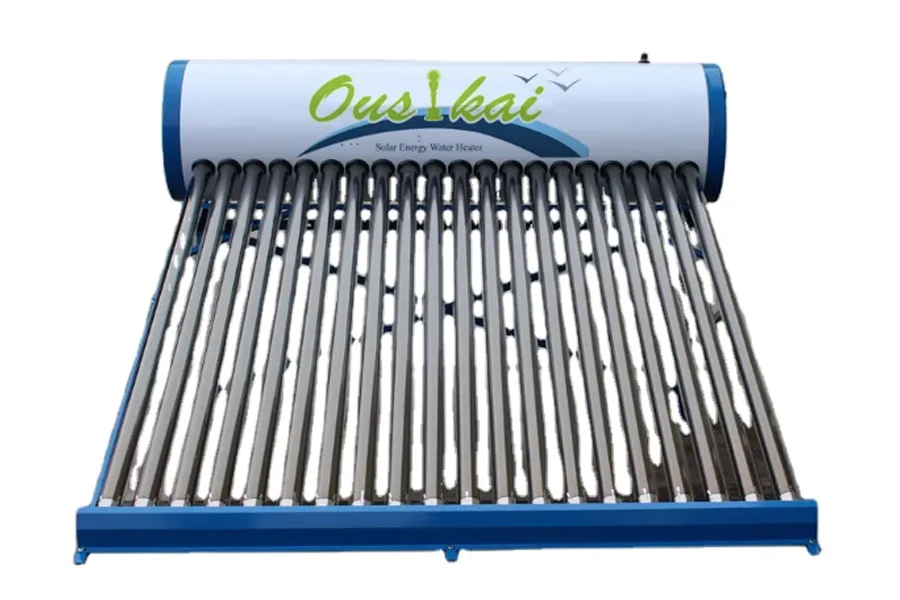
Evacuated tube solar collectors are the most popular types of solar thermal collectors across the world. These collectors use glass tubes arranged in a parallel, with two layers of glass tube, one inside the other. A vacuum is created between the two glass tubes, which reduces heat loss. Inside the inner tube is an absorbing medium which captures heat to be transferred to the water system.
Evacuated tube systems are highly efficient at absorbing and retaining heat from solar energy and generally more efficient than flat plate collectors.
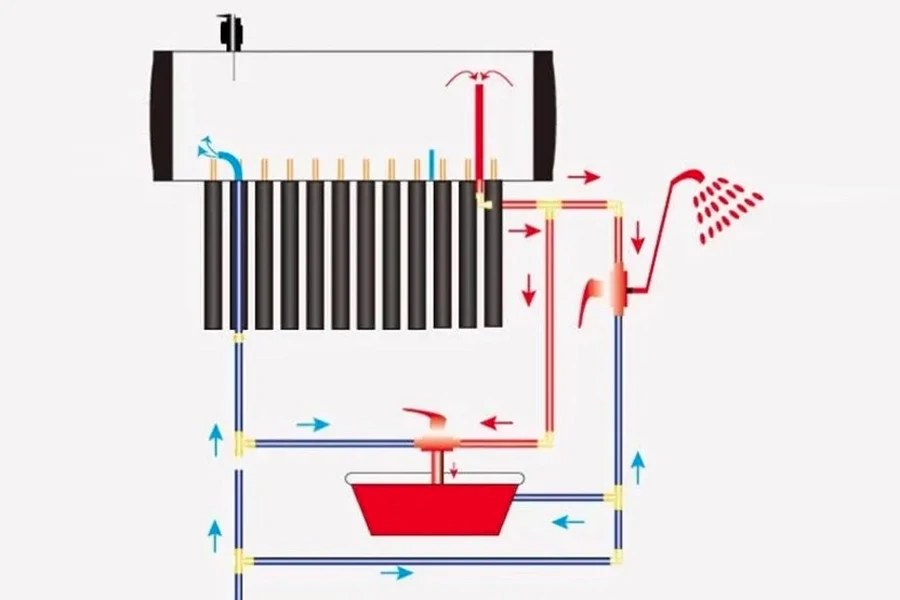
Other types of solar collectors
Parabolic solar thermal collectors
Parabolic collectors are solar thermal collectors that use a polished metal mirror arranged in a trough or dished shape to focus the sun’s rays directly onto a point to be heated.
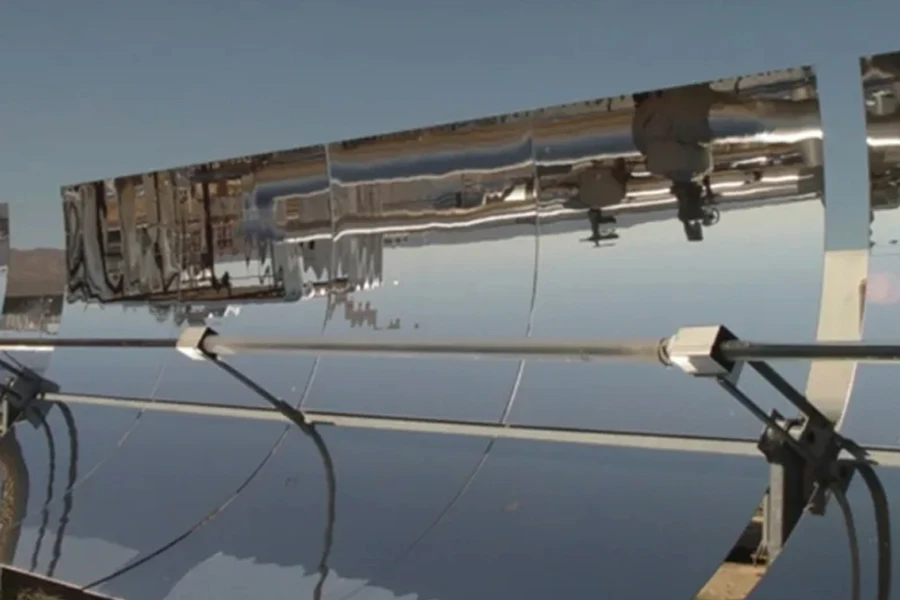
Parabolic trough solar collectors are curved along a plane to focus solar energy onto a tube that runs along the center of the trough. The fluid within the tube is heated by the focused rays and is then piped to be used as a heat source. In the above example, the seller prices by square meter, at between US$3 per sqm to US$6 per sqm depending on the amount ordered.
Parabolic troughs are fixed in place, aligned to the sun at its most optimum point of sunlight, and need longitudinal space for the array. They are not usually purchased for home use, and more typically have applications for farms and other commercial uses.
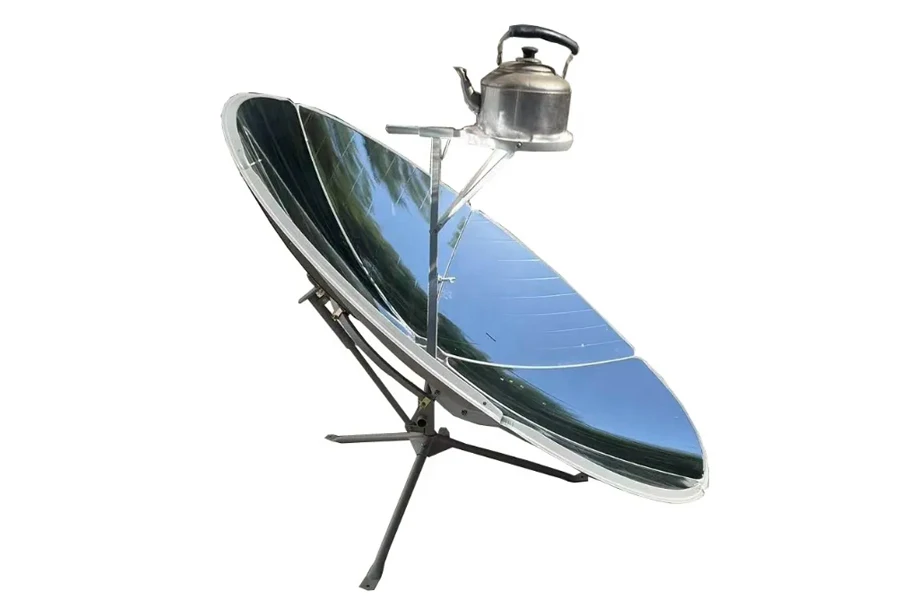
Parabolic dish solar collectors, as their name implies, are dish-shaped and use a polished mirrored surface to focus the sun onto a single point in front of the dish. They are typically used for water heating and cooking, as in the above example showing a kettle placed at the focal point of the dish.
For these collectors, the main choice for the buyer is the size of the parabolic dish, with the above example showing a 1.5m diameter dish, selling for around US$ 23. These models are described as kitchen solar cookers, but would need to be placed where they get sufficient sunlight. They are small enough to be moved easily, and can be assembled quickly for ad hoc use.
More advanced models use a dish with a fixed base, but with a tracking system to rotate and angle the dish to follow the path of the sun. These models are not simple cooking dishes and instead collect and channel the heat collected.
Unglazed water collectors and air collectors
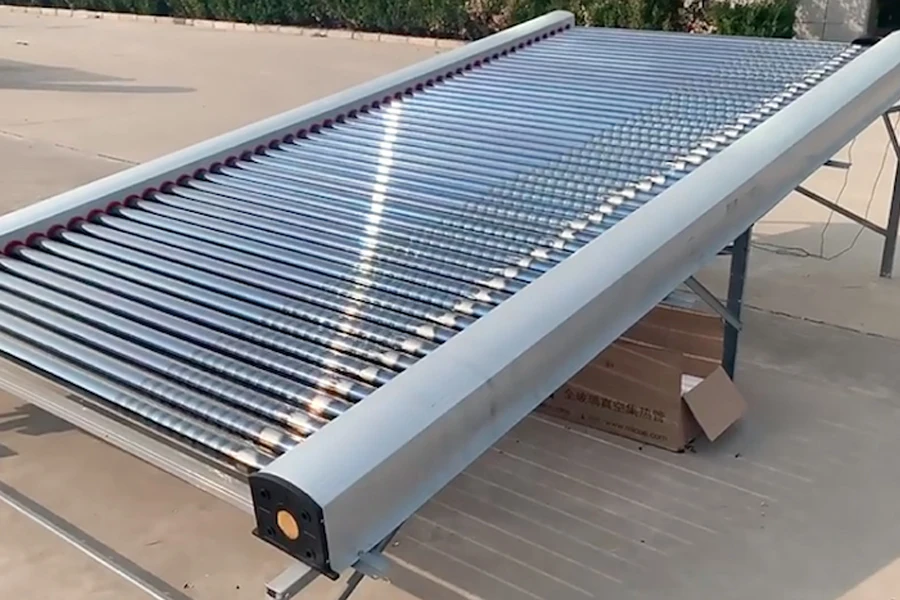
These solar collectors use an absorber in the same way as do flat plate collectors, but without a glazed cover. They are simplified methods of collecting heat for water or for piping warmed air into a residential or commercial building.
Final thoughts
Solar thermal collectors are an increasingly popular purchase for residential and commercial use. These systems are cheap to buy and install, and make use of the readily available source of renewable energy from the sun. Using solar energy directly from sunlight, they either channel that energy directly to heat water, air or even food, or direct the energy to a heat collection medium that is then used in heating systems.
For the most common usage of heating water for domestic use, for baths, showers and for heating swimming pools, the main choices are flat plate solar thermal collectors, or evacuated tube solar thermal collectors.
As evacuated tube technology uses a vacuum space to improve thermal capture and reduce radiated heat loss, they are regarded as more efficient than flat plate collectors. They heat quicker, to a greater temperature, and retain that heat more efficiently. By comparison, they cost more than flat plate collectors, but this can be calculated as very competitive on a dollar per thermal unit basis.
Potential buyers will also want to explore other choices available, such as parabolic solar collectors or simplified air collectors, depending on their needs. For more information on the wide selection of solar thermal collectors available in the market, check out the online showroom at Alibaba.com.
